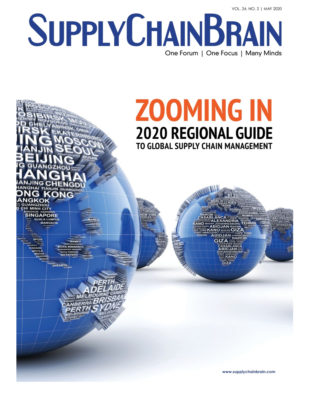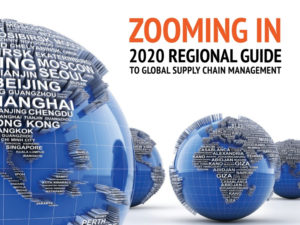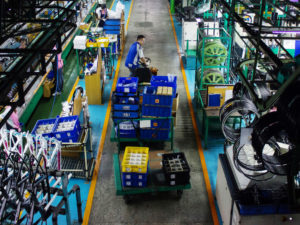- LOGISTICS
- TECHNOLOGY
- All Technology
- Artificial Intelligence
- Cloud & On-Demand Systems
- Data Management (Big Data/IoT/Blockchain)
- ERP & Enterprise Systems
- Forecasting & Demand Planning
- Global Trade Management
- Inventory Planning/ Optimization
- Product Lifecycle Management
- Robotics
- Sales & Operations Planning
- SC Finance & Revenue Management
- SC Planning & Optimization
- Supply Chain Visibility
- Transportation Management
- GENERAL SCM
- Business Strategy Alignment
- Customer Relationship Management
- Education & Professional Development
- Global Supply Chain Management
- Global Trade & Economics
- Green Energy
- HR & Labor Management
- Quality & Metrics
- Regulation & Compliance
- Sourcing/Procurement/SRM
- SC Security & Risk Mgmt
- Supply Chains in Crisis
- Sustainability & Corporate Social Responsibility
- WAREHOUSING
- INDUSTRIES
- THINK TANK
- WEBINARS
- PODCASTS
- WHITEPAPERS
- VIDEOS
Home » Publications » Supply Chain Brain Magazine
Our Publications
Please select a publication below.
Supply Chain Brain Magazine

2020 Regional Guide to Global Supply Chain Management
Volume: 24
Edition: 2
Featured
Back to TopNorth America
Back to TopEurope
Back to TopChina
Back to TopAsia Pacific
Back to TopQ&A
Back to TopSpecial Reports
Back to TopSubscribe to our Daily Newsletter!
Timely, incisive articles delivered directly to your inbox.
Popular Stories
-

USDA Signals Egg Price Relief as Bird Flu Outbreak Slows
-

Ocean Carriers Get Tough on Freight Rates — But Can They Hold the Line?
-

Trump’s On-Again, Off-Again Tariff Strategy Sows Confusion
-

Podcast | Finding the Right Technology and Automation for Your Operation
-

DOJ Opens Price-Fixing Probe into U.S. Egg Producers
Case Studies
-
Recycled Tagging Fasteners: Small Changes Make a Big Impact
-

Enhancing High-Value Electronics Shipment Security with Tive's Real-Time Tracking
-

Moving Robots Site-to-Site
-
JLL Finds Perfect Warehouse Location, Leading to $15M Grant for Startup
-
Robots Speed Fulfillment to Help Apparel Company Scale for Growth
- LOGISTICS
- TECHNOLOGY
- All Technology
- Artificial Intelligence
- Cloud & On-Demand Systems
- Data Management (Big Data/IoT/Blockchain)
- ERP & Enterprise Systems
- Forecasting & Demand Planning
- Global Trade Management
- Inventory Planning/ Optimization
- Product Lifecycle Management
- Robotics
- Sales & Operations Planning
- SC Finance & Revenue Management
- SC Planning & Optimization
- Supply Chain Visibility
- Transportation Management
- GENERAL SCM
- Business Strategy Alignment
- Customer Relationship Management
- Education & Professional Development
- Global Supply Chain Management
- Global Trade & Economics
- Green Energy
- HR & Labor Management
- Quality & Metrics
- Regulation & Compliance
- Sourcing/Procurement/SRM
- SC Security & Risk Mgmt
- Supply Chains in Crisis
- Sustainability & Corporate Social Responsibility
- WAREHOUSING
- INDUSTRIES
- THINK TANK
- WEBINARS
- PODCASTS
- WHITEPAPERS
- VIDEOS



